Racing Games used to be the person who could roll the lucky numbers win. This is not one such game.
When Restoration Games first came to my attention, it was for the amazing Stop Thief! Kickstarter. Their passion for gaming and the work that went into streamlining and modernizing Stop Thief! was amazing, and made me want to look into them more.
Indulgence by all accounts is a great game but is one of those rare ones that I will wait for another in my group to buy it before playing. All I have against it so to speak is that it’s a trick-taking game, not one of my favourite genres.
And then there was Downforce. I really enjoy Formula D in theory, but in practice, it just takes too long. That sense of urgency and racing just doesn’t quite hold for the couple of hours required to play a game.
So I ordered Downforce with a little bit of hesitancy. I enjoy racing games, but I didn’t want another Formula D type game, and Flamme Rouge was ticking a lot of boxes for me. But the team knocked it out of the park with Stop Thief!, so I decided to give it a go.
And I am so glad I did.
When you open the box, the first thing I noticed was a large multi-page manual. Flicking through it, I realised it only took a couple of minutes to read the entire manual cover to cover. Everything is laid out in a simple, logical manner, that made playing with the manual open the first time surprisingly easy.
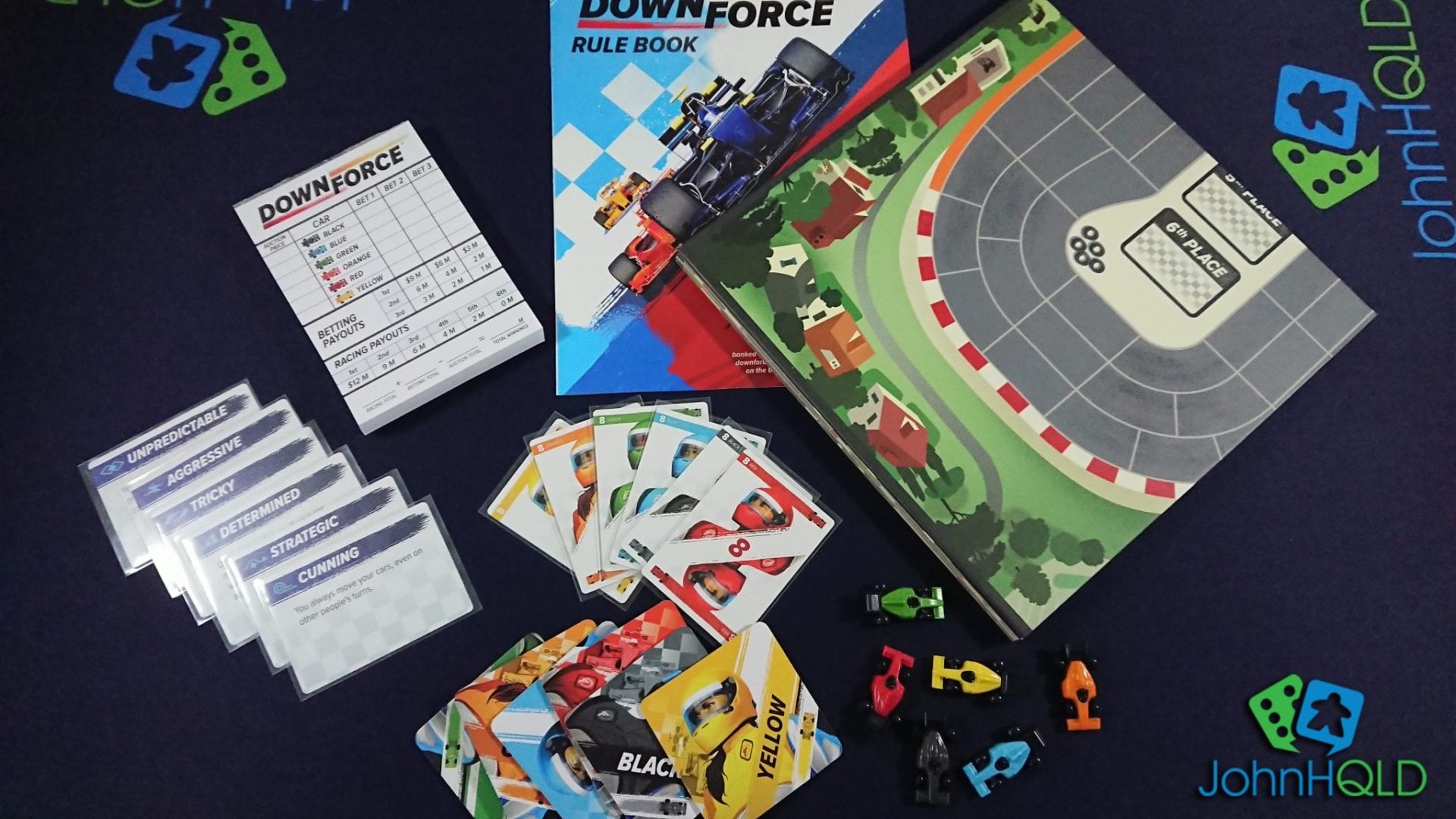
Then looking at the rest of the contents, everything was just as simple to understand. Six coloured racing cars with accompanying tiles, a deck of cards, and a score pad. While multi-component games can be a lot of fun, there are plenty of times that you just want to sit and play, and I already had a feel Downforce was one of these games.
While I don’t think Downforce is a complicated game overall, I will talk you through the simplified or more basic version of the game we went through to start with.
Setup is pretty simple. Randomly set out the 6 cars on the board. The colour that gets put on the number 1 spot will be the first player.
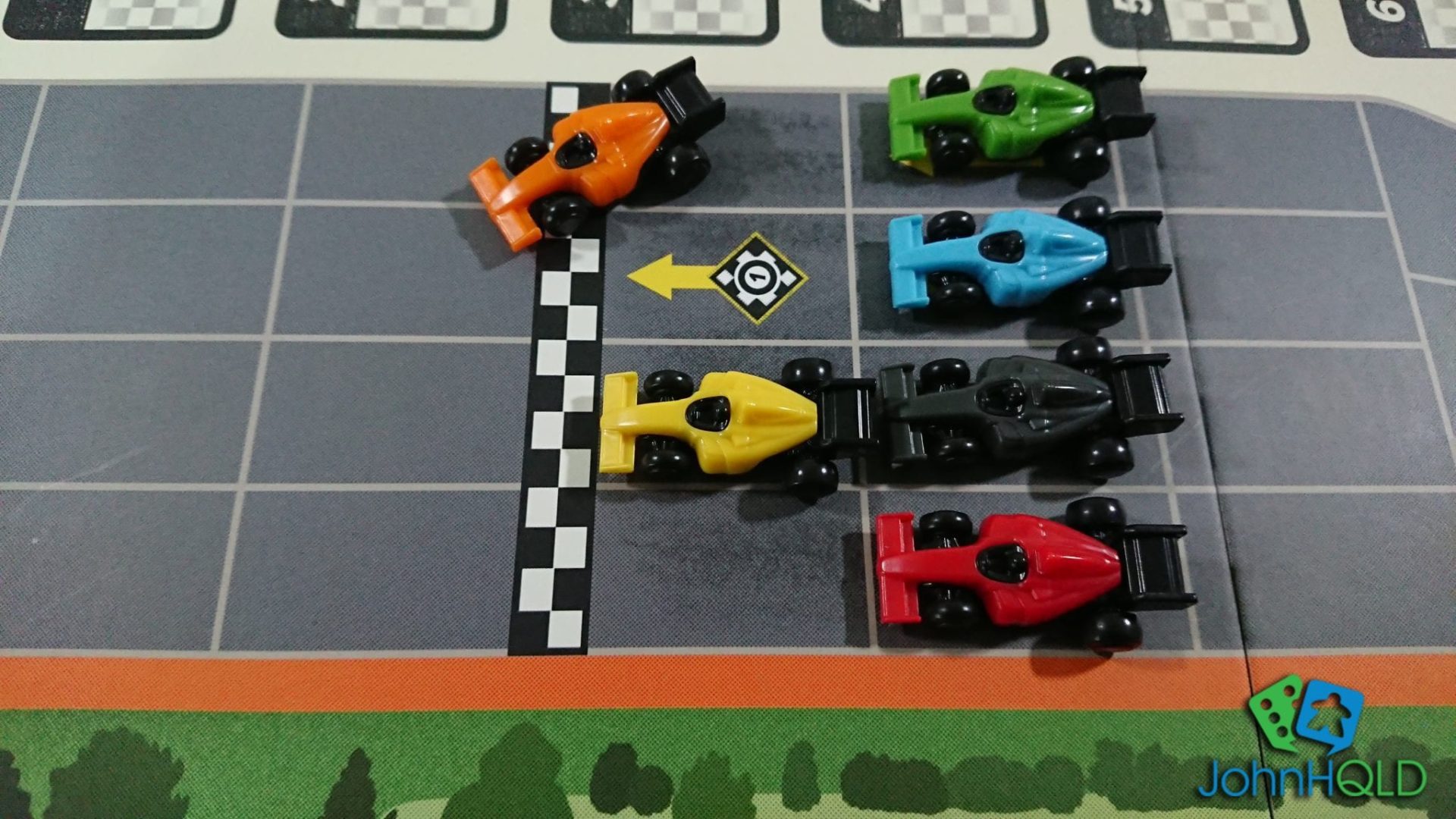
Shuffle out the 6 number 8 speed cards and deal them face down to each player until everyone has the same number of cars. Everyone then flips over there cards to reveal who they are. This is how you allocate who is what colour and first player. For the team powers, I tend to shuffle them and let each player randomly draw one in these types of games.
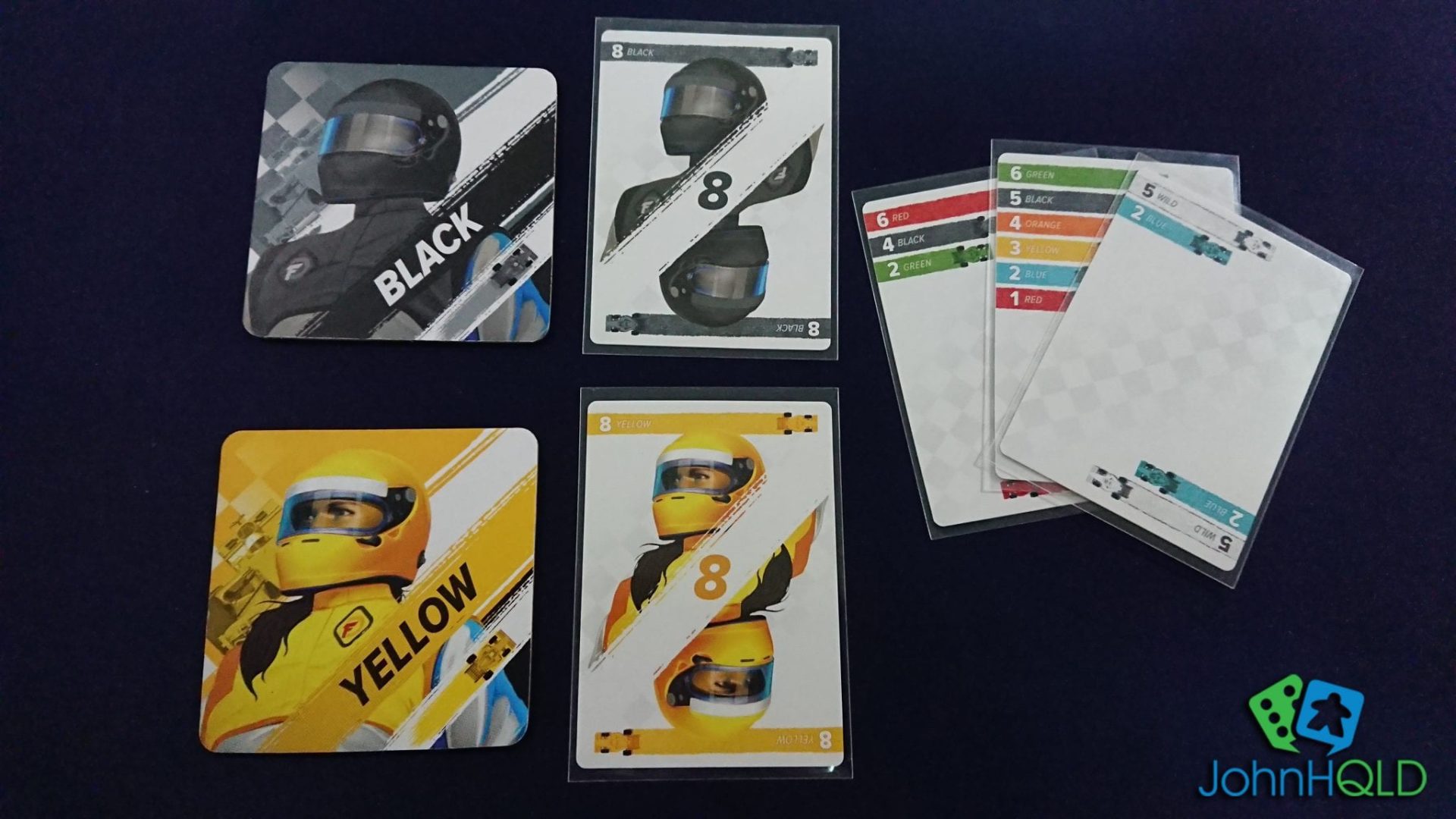
Then shuffle the remaining speed cards, and deal three to each player and put the rest in easy reach distance for all players.
And that is it. The player who’s car is on the number one spot at the line goes first – it’s that simple!
Players are trying to finish the race with the most money. Coming first gets you more winnings, but there are betting and the previously mentioned auction mechanic that changes how this works. For the first game, just straight up race and see who places first.
Moving the cars
To move, play a Speed card. Most Speed cars have movement amounts for multiple cars, up to 6 in total.
You can’t move sideways, and you can’t move backwards – you always have to move forward (which makes sense for race cars – they won’t stop on a track). You have to move all of the cars on the card from the top to the bottom – but you move all of that cars on your turn. This lets you potentially block in cars or force suboptimal plays for other cars.
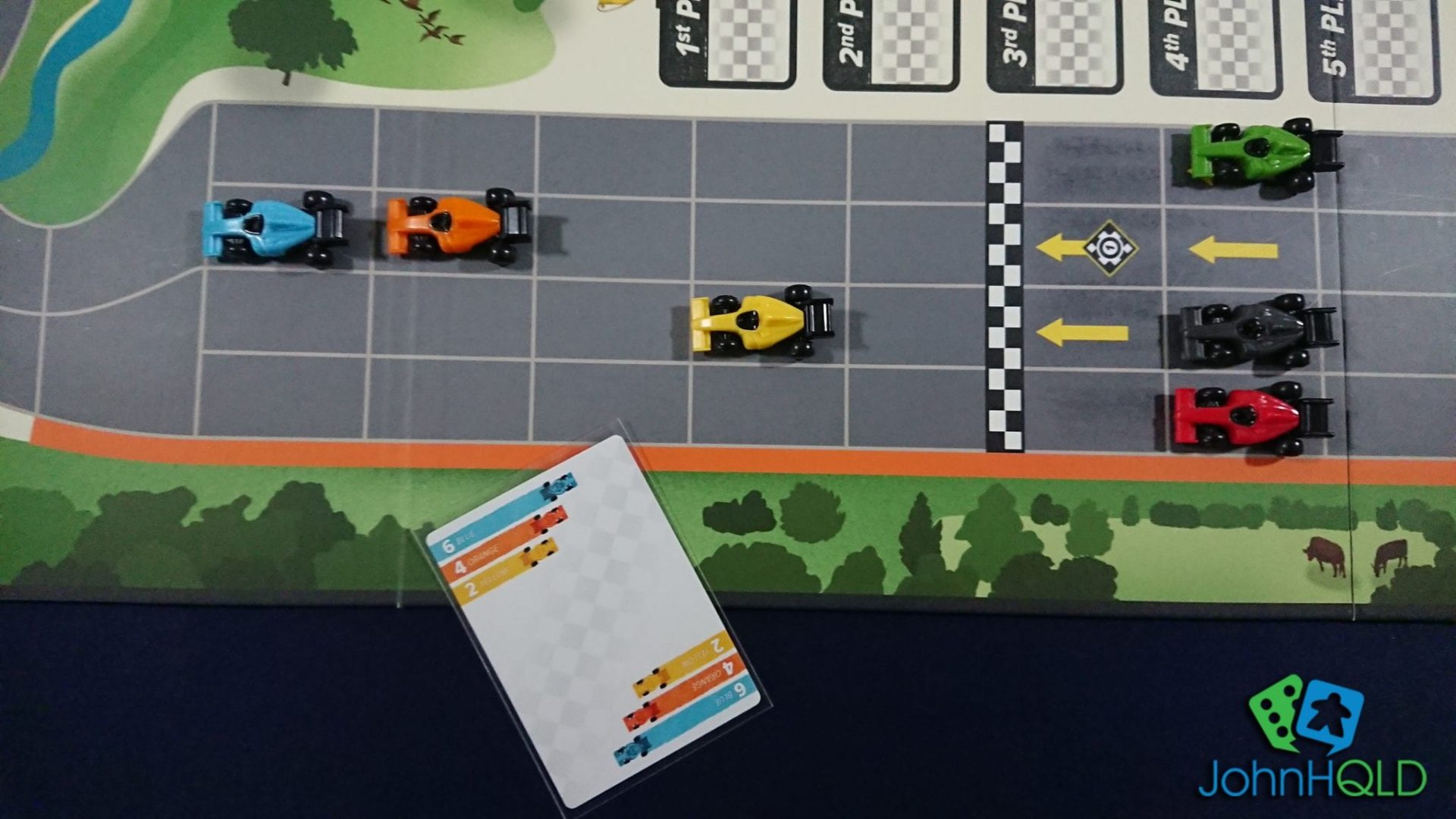
By the letter of the rules, you can move a car forward if the end of the square is further ahead than the square the car is in. Also, you can move into any square that a forward corner is touching.
These rules sound a little confusing, but the rulebook gives clear examples of the movement to simplify it.
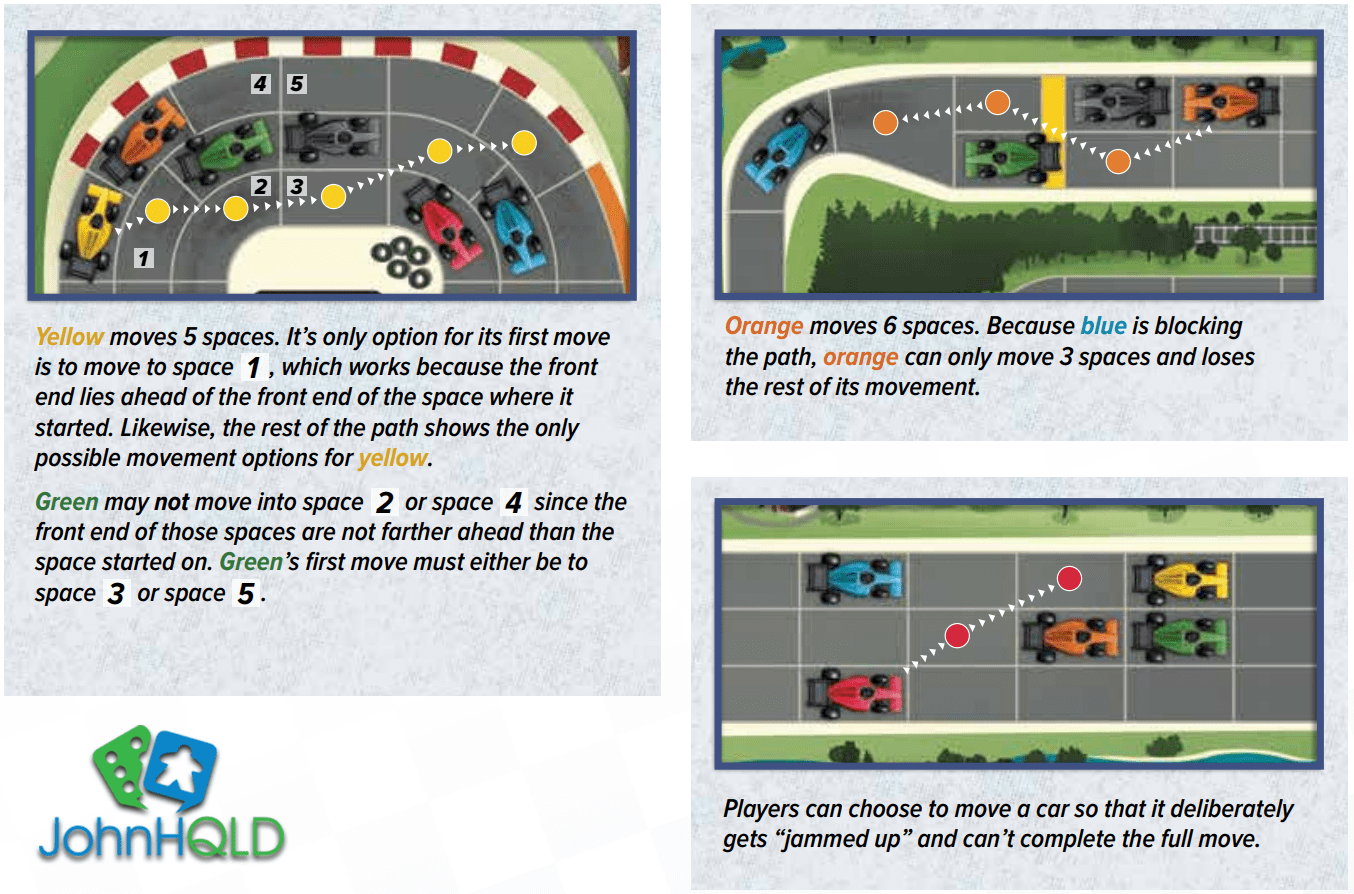
However, I play and teach by a slightly modified ruleset. I teach so that movement can only be in a square that the front edge of the square touches. This helps prevent some ‘runaway leader’ play that I have seen, but it is essentially a house rule. Keep it in mind, but I will talk about this later in some more detail.
Team Powers
A simple way to keep multiple games interesting, Team Powers let you break or bend rules during gameplay.
Don’t want people to keep blocking you in when they move your cars? Grab the ‘Cunning’ power and always be the one to move your cars.
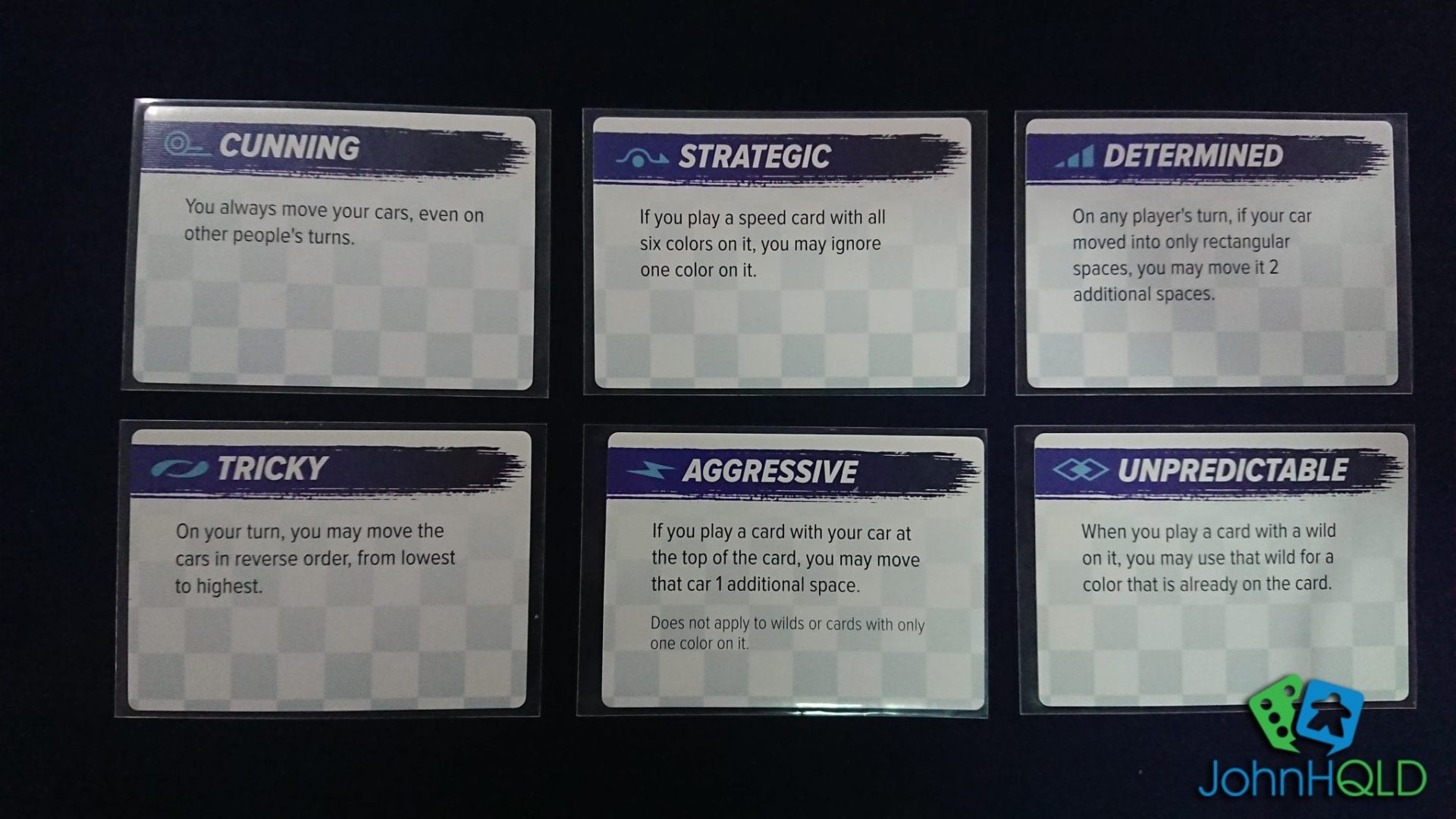
Have a lot of a single colour car on top of your Speed cards? Grab that car and the ‘Aggressive’ power to move an extra space when you play one of those cards.
Don’t want to move a particular car on your turn? That’s where ‘Strategic’ can help you.
Whether randomly handed out or auctioned off, these cards can change a game in a blink of an eye.
The Betting
Betting plays a big part in Downforce, but it can be a little confusing for some the first game. It is something that I end up usually adding if I know all the players are used to different games though.
Betting is really simple – on each track, there are three yellow lines. Think of them as stages. When a card that causes the first car to cross one of these lines is finished, pick on your scoresheet the car you think will win.
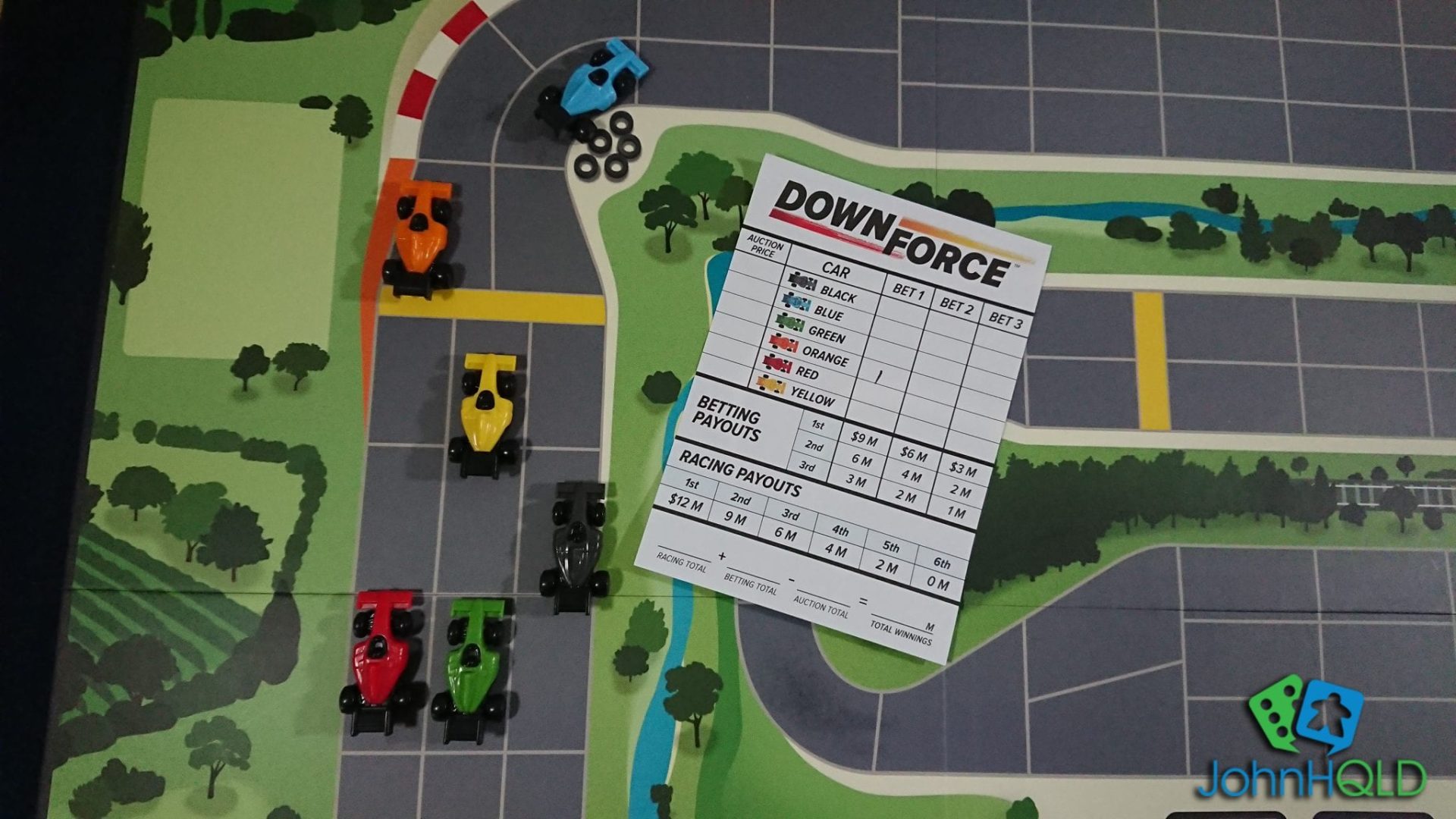
It doesn’t have to be yours, and it can be bet on multiple times. Betting is also free. At the end of the game, add each bet total to your score on the sheet. There are plenty of games I have played where even a player that finished fourth won the game because of clever betting!
The Auction
The Auction is something I suggest you leave until your second game. It’s not overly complicated, but it is the part of the game that most first time players have the most trouble with.
Setup is almost identical, but when you play the full game all of the speed cards are dealt out to players before the game starts. This fixes the possible strategies for players at the start, for example, a player may have much more red movement than black movement.
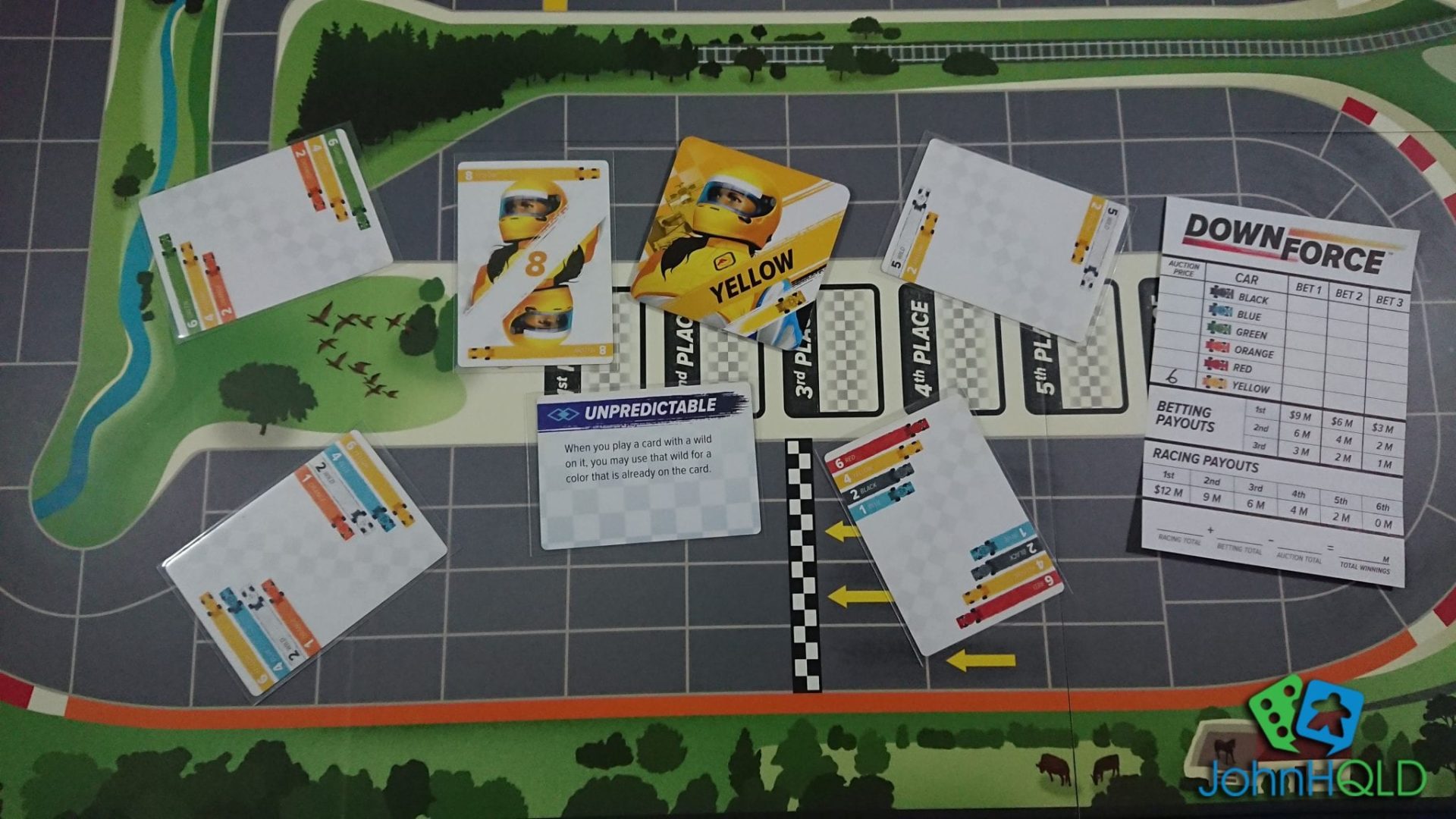
Shuffle up either the Speed 8 cards or the car tiles, and flip the first one over. Now do the same with the Team Powers. This means players can bid on the car and power they want.
Bidding is down with speed cards face down. If you have that colour car, the amount of movement is the amount you are bidding on the combination.
There are some tiebreaker rules and ways to use Wilds, but in general, this is it. Once you win, you put the Speed 8 card in your hand, and take the power and the car tile. All players put their bidding card back into their hands.
This can mean that players have more than one car. Every car must be used when playing this way, and each player must have at least one car.
So why not go all out and bid for as many cars as possible? Because of the amount you won the bid with. This comes off your final score, as you have laid out money already to be in the race. There is another small catch to multiples – while you will keep multiple cars, you can only keep a single Team Power. No stacking up the advantages here!
This makes Downforce more thematic to a degree, but also much more calculating. Do you go your favourite colour just because you can? Do you bid high on the power you want, and high on the power you don’t want Bob to have just to deny them? So many possibilities. And because you can see your choices at the start of the game, planning is essential.
The Gameplay
So as you have seen, I have split out various rules in explaining how to play the game. That is because Downforce is very modular. You can mix and choose the rules you want to play with, and customise the experience to your liking.
Playing with younger children? Play three cards in a hand and just use final placings to score. Playing with cutthroat strategists? Use every rule there is and make every mistake really hurt.
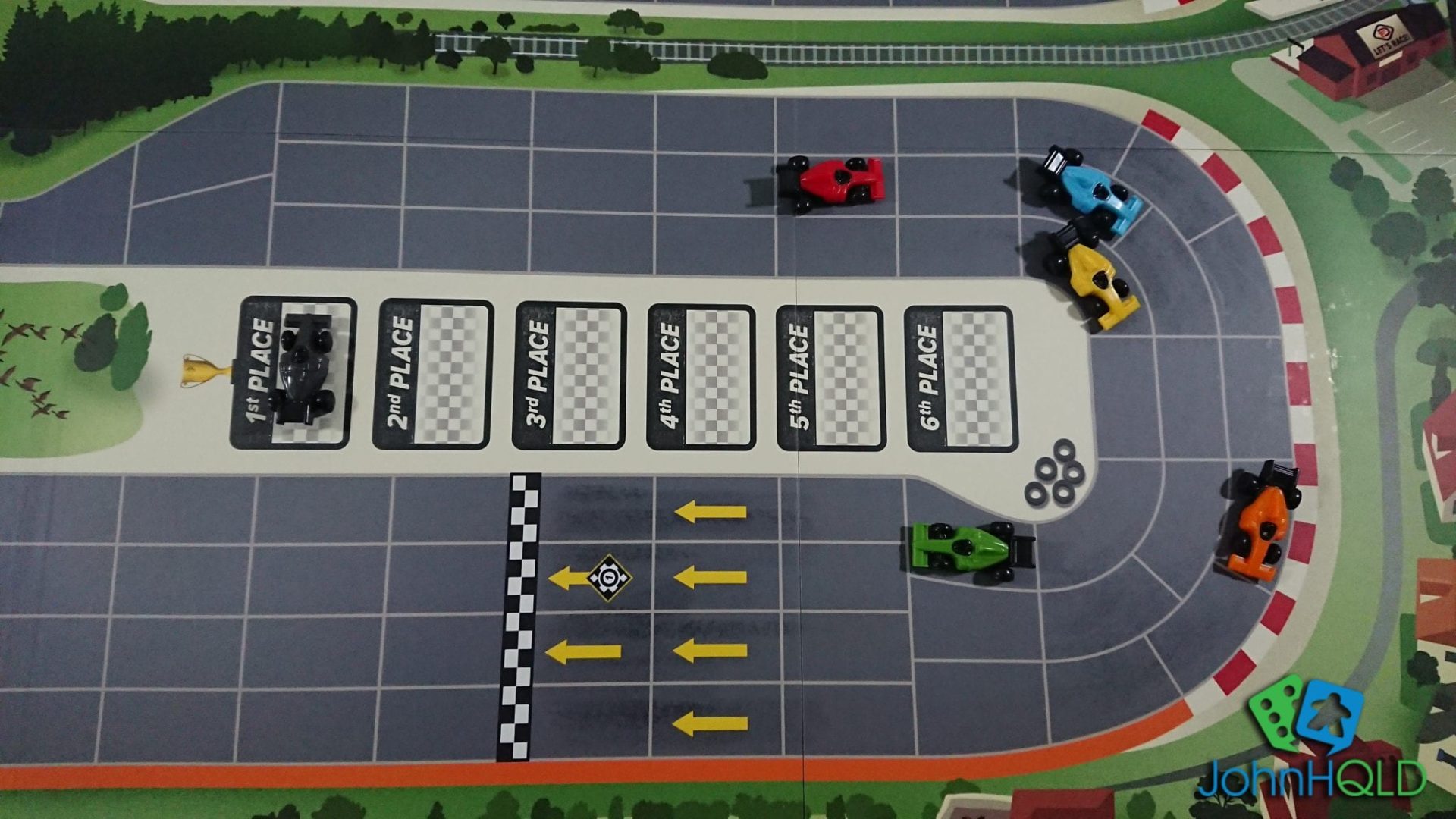
But even when all that is done, each game is fast. Like 20-30 minutes fast when you get into it. So you can make something fun or an all-out fight, and still play multiple games in the time it takes for Formula D.
And each game is a lot of fun. I have only met one person that didn’t like Downforce, and I am still not 100% sure why.
Yes, it’s simple. But you don’t need overly complex mechanics to create a deeply strategic game. And it’s a rare find where games this deep can be just as fun played as a luck based game as well.
Downforce is so well balanced, but it’s not until you really get into the game before you discover this – except for a couple of points.
The Downsides
There is one power – ‘Determined’ – that I try to take out of experienced players hands when playing a mixed game. Determined means you can move an extra 2 spaces as long as you only moved into rectangular spaces during the game, and it triggers all the time.
Now if everyone knows how Determined works it can be played around, but when people are learning it’s a bit much. A player with Determined early in the turn order is one of the few ‘runaway winner’ scenarios I have come across. This is the one reason why I slightly altered the movement rules.
If a player wants the leader to slow down, forcing them to take the outside lanes work – as long as they can’t just zip through on their turn. It was a simple change and also simplified movement, but it’s a rule I needed to change without simply removing Determined from the mix.
The auctioning and betting rules offset a lot of the advantage normally, but players need to be aware of the entire game for this kind of counterbalance to happen naturally in game.
There are a few combinations I have seen people complain about being overpowered, but this particular scenario is the only one I have seen frequently enough to call a rule change for.
